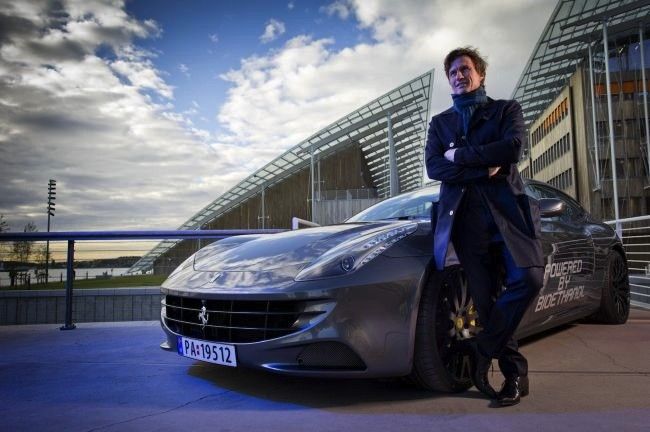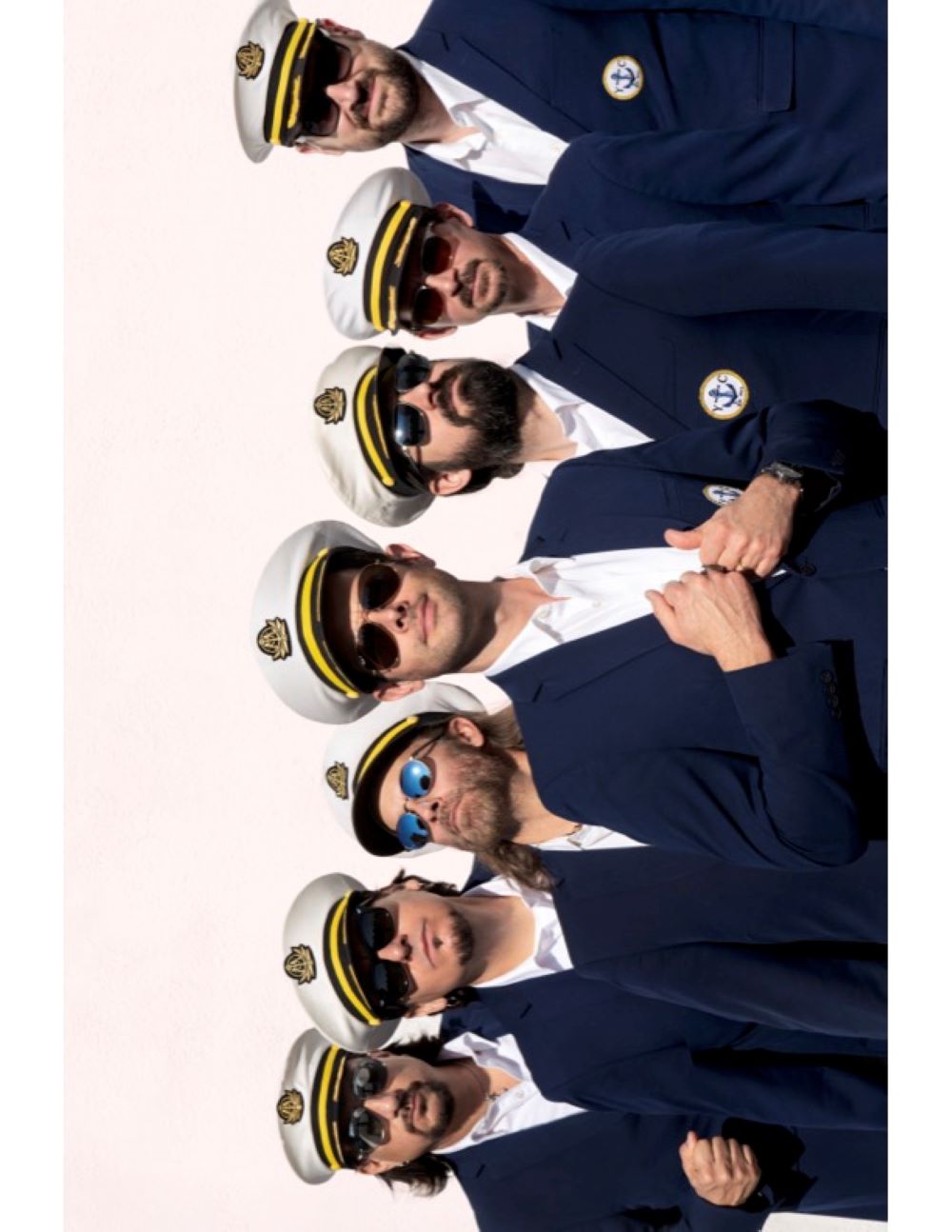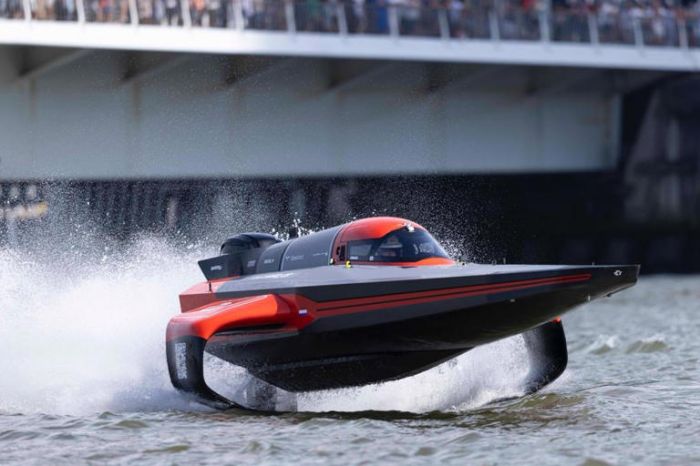
Petter Stordalen is not a name that many Americans know well, except in hotel and hospitality circles. But in Scandinavia, especially in Norway, his name is almost a household word. He has taken the renowned Norwegian hard work ethic to astonishing heights. In 15 years, starting with two hotels and 350 employees, Stordalen has built the largest hotel company in Scandinavia. Now, Nordic Choice Hotels has 12,000 employees, five hotel chains, a collection of independent hotels and resorts, nine unique properties, fourteen brands, 170 hotels and a yearly turnover of $1.2 billion USD. Nordic Choice invests heavily in its corporate and social responsibility programs founded on the triple bottom line philosophy—people, planet, profit—with its vision for a more sustainable capitalism for the immediate future.
Stordalen is also passionate about the environment and is a strong supporter of sustainability. Through The Stordalen Foundation, he and his wife, Dr. Gunhild Stordalen, are renowned supporters of charitable organizations that focus on environment/climate change and scientific research programs. He was named Entrepreneur of the Year in 2010 by Ernst & Young.

But, unlike many other entrepreneurs focused on success, there are more identities to Petter Stordalen. First, of course, he is a successful hotelier; second, he is an astute contemporary art collector; third, he is a passionate environmentalist, philanthropist, and a role model for risk tolerance. All these identities appear to work in concert with the engaged life he leads, and they take him in many diverse directions.
As a former Ironman racer, he opened the Clarion Hotel in Stockholm's Arlanda airport by flying his helicopter to the roof, getting out and then running down the side of the building in a harness—Tom-Cruise-Mission-Impossible style. As a passionate environmentalist, he chained himself to the U.K.’s nuclear treatment plant Sellafield in protest for nine hours. Recently, he rebuilt his sports car to be the world's first bio-fueled Ferrari, combining deep eco-sensitivity with unbridled luxury.

I came to know his name, reputation and work when I was a guest at The Thief, an exceptional art galley/museum hotel on the Tjuvholmen (Thief Island) in Oslo, directly on the Oslofjord, and next door to the contemporary Astrup-Fearnley Art Museum, designed by Renzo Piano. Stordalen saw a great opportunity in creating a one-of-a-kind hotel on an island that used to be the final home (many lived and died there) of thieves and robbers in the 18th-19th centuries. He also envisioned a hotel that could be home to pieces of his own multi-million-dollar contemporary art collection. The Thief and the Astrup-Fearnley now have a strategic partnership, where Stordalen’s art and the museum’s art can be loaned back and forth—another unique dimension of The Thief. This hotel opened in January of 2013, and is the only hotel in Norway that’s a member of the ultra-exclusive Design Hotels Group.
It was a pleasure communicating with him.

JustLuxe: The Thief is a fascinating mélange of hotel and art gallery, especially underscored by the Astrup-Fearnley Museum next door. I‘d like to know, since you are a self-professed “hotel nerd,” and have a substantial contemporary art collection, which great passion came first—hotels or art—and when?
Petter Stordalen: Hotels came first. The first time I got a more active approach to buying art was at the hotels. Already in the early stages of my company, I had a “no posters, and no bad copies” policy. We had to do something different, something real. Art gives hotels a new dimension. All hotels have a restaurant, a bar, a coffee shop, so that is not what separates a hotel from the competition. With art you can create something unique. A hotel where the art is done properly will make a completely different impression.
JL: The Thief is probably not the first hotel you have owned, managed or created that has exceptional art in it—what others have substantial artwork?
PS: In the restaurant garden at one of our other hotels, Copperhill Mountain Lodge, stands Irma och Nuria by Spanish sculptor Jaume Plensa—two huge female heads conversing with each other. Anyone who has eaten breakfast or dinner at this restaurant will remember these heads, standing out there in the dark or the snow. It's just beautiful! Art affects the guests and gives them memories and stories to tell. The Clarion Hotel & Congress in Trondheim has some amazing pieces by Alex Katz and Jaume Plensa. And at the Clarion Hotel Post in Gothenburg we have a huge, six-meter-high, flattened, red Norwegian Postal Service van hanging on the wall. The hotel is located in a building that served as a post office in the 1920s.

JL: What were some challenges in creating The Thief and its brand, and how were they overcome?
PS: In creating The Thief we were on a flow—on the same page. There were very dedicated and skilled people involved and everybody worked very smoothly together. The name was so strong that everything could be built around that. We chose a bold name—The Thief—named after the activities the area was known for 300 years ago. Some regarded that as a challenge; instead we embraced it.
JL: You were born in a small town—not in a large city—are there values and ethics derived from where you grew up that you take with you today?
PS: Yes, typical Norwegian qualities like working hard, not being afraid of getting my hands dirty and the love of a cold beer after dinner.

JL: You are known to be a passionate environmentalist—where did this sensitivity come from? You have also founded a number of organizations that promote greater awareness of environment concerns. Can you talk about them, and how they are doing?
PS: My business card reads: There’s no business on a dead planet. It is that simple. But our dedication is not just about stopping global warming. It’s also about getting a competitive advantage. The consumer of the future will buy from businesses that take responsibility. They want information and documentation, and if you can’t give it to them, they will find it somehow.
We also have three major environmental initiatives that were all founded and run by my powerhouse wife, Gunhild Stordalen. Through the Stordalen Foundation, we support projects, initiatives and organizations that actively work for a sustainable future, for people, animals and the environment. The foundation Gunhild initiated, called GreeNudge, has gained international recognition for their scientific research projects combining behavioral economics and climate measures. The Norwegian Association of Psychologists awarded GreeNudge the Innovation of the Year award in 2013. The Stordalen Foundation is behind the first annual EAT Stockholm Food Forum, an international high-level forum on food, health and sustainability, co-hosted by Stockholm Resilience Centre, together with partners such as Harvard University, The Lancet and The Norwegian and Swedish Medical Associations. The goal is to create an arena where science, politics and business can share insight and ideas on how to sustainably feed a healthy world population.

JL: How does The Thief reflect some basic environmentally sensitive ideas?
PS: Our vision is to create unique, fantastic experiences without comprising the world around us and the future of the planet. Some of the greatest challenges of our time are linked to a scarcity of resources and environmental problems. Sustainable business isn’t just about ethics and social responsibility, it’s about getting more from less and harmonizing with the modern guest’s wishes and needs. Quality rather than quantity. I am a technology optimist and at The Thief we implemented clever, energy-efficient solutions to reduce energy and water consumption and for waste handling while giving our guests seamless and user-friendly systems. Every room is an individual energy zone, so energy consumption can be optimized in relation to requirements at any time. In regards to cuisine, The Thief serves the best Norway and Scandinavia has to offer in local ingredients. We like to say, ‘great food with a clean conscience.’
JL: Also from an environmental perspective, do you sense you have made some impact, or do you feel you still have a long way to go in changing minds and hearts about the environment?
PS: I have been outspoken about the need for sustainable capitalism and I hope that I can function as a catalyst and translator between the business community and environmentalism. But yes; I could, should and will do more.

JL: I have read some bios and articles about you—many have said you were eccentric. Though this often has negative connotations, it also has some positive ones, one being a true, out-of-box, original thinker. What are your thoughts on being considered eccentric?
PS: I have never cared about labels; life’s too short and wonderful to be bothered with such details.
JL: I also read you drive a bio-fueled Ferrari—this seems symbolic of how you appear to live your life: eco-sensitive, yet luxurious. Are there other aspects in your life and work that reflect this combination?
PS: Well, I live in a house that has been adapted to become as environmentally friendly as possible. I like to think that I use my consumer power to support green inventions and products.

JL: You are also known as a deeply philanthropic person—how do you see philanthropy and eco-sensitivity working together in the future?
PS: The world will not leap forward with philanthropy alone. However, it might just provide some necessary nudges. I would love to see more philanthropy in the eco-field executed by capitalist methods. I think that would bring both power and speed through that credibility to philanthropic efforts.
JL: What was your first art purchase? Your last? Do you know some of the artists you have bought from?
PS: I bought a small, naively painted picture for a thousand dollars; it was of a boat. Not a pretty picture and not a good buy, I believe. My last piece was a sculpture by the Danish artist Kirsten Ortvedt called Midas.

JL: In regards to The Thief, when you first envisioned what it could be, did you have an architect immediately in mind, or did you go through a process to find Ajas Mellbye?
PS: I know Ajas Mellbye from projects we have done together before The Thief—excellent work! But these decisions are never taken lightly. We always have a thorough process that starts with inviting the best architectural firms to give their suggestions. The best idea wins. This time it was Ajas Mellbye.
JL: I’d like to know what ideas you have in mind for your next projects. Will they be hotels? Please let me know your thoughts about this. In addition, I would also like to know if you have any plans to create a great contemporary art hotel or hotels in North America or Asia.
PS: Right now, we have 10 new hotel projects under construction in Scandinavia for the next three years. I will finish these and then we can talk!














